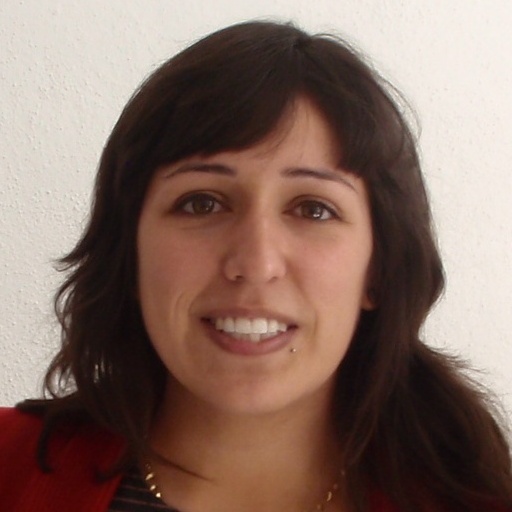CEFR language levels made easy

‘My Spanish is good, but I’d like to be a little more fluent’. ‘My French is basic for now. I can only say a few simple things'. It’s common to think of your language proficiency this way. However, if you want to find out what your true foreign language level is, you should learn about the 6 internationally recognized language levels.
Here’s where CEFR comes in handy. What is CEFR? The Common European Framework of Reference (CEFR) for Languages is a standard way to assess your current level. It’s widely used around the world to measure your foreign language proficiency.
Let’s have a look at what the 6 language levels are:
- What are the 6 levels of language proficiency?
- 1. Beginner: CEFR Level A1
- 2. Pre-Intermediate: CEFR Level A2
- 3. Intermediate: CEFR Level B1
- 4. Upper-Intermediate: CEFR Level B2
- 5. Advanced: CEFR Level C1
- 6. Mastery: CEFR Level C2
- How can Lingoda help you progress to the next language level?
- FAQs relating to advancing your level
What are the 6 levels of language proficiency?
There are 6 internationally recognized levels: A1, A2, B1, B2, C1 and C2. Each of them has their own set of language skills. You are expected to master the skill set for each level before moving on to the next.
If you know your proficiency level, it’s easier to know what to work on to get to the next level. Also, you’re better able to figure out how long it will take you to reach a particular goal (e.g., communicating with locals as a tourist, understanding the news, or obtaining an international certification like DELF for French).
So, what are the language levels? Let’s take a closer look at each of them.
1. Beginner: CEFR Level A1
A1 is the first step of language proficiency. You’re just starting to learn the language and acquire some basic communication skills. Even if you’re a basic user, you’re able to achieve very simple communication needs.
What skills do you acquire at this level?
At A1, you can:
- use everyday expressions and basic phrases
- introduce yourself and say where you come from, where you live and what you do
- tell the time and ask for it
- talk about the weather
- ask for simple directions
- describe and ask basic questions about family, work or hobbies
- use present simple and limited past simple and future to talk about everyday topics
Study habits you need to reach this level
To reach the next level, you should acquire these study habits:
- master the alphabet and practice spelling names, email addresses and phone numbers
- do exercises to solidify your basic grammar knowledge, especially grammar tenses
- keep a record of useful everyday words and idioms in an organized notebook
- listen to A1 podcasts to get exposure to slow, natural speech
- exchange greetings and simple conversations whenever you can
2. Pre-Intermediate: CEFR Level A2
A2 is the next step after A1. Here, you start to say more about yourself, ask longer questions and build more complex sentences. Your fluency is still limited but your vocabulary starts to expand to abstract topics instead of just everyday objects. Your grammar structures also become varied, even though it's still difficult to communicate about more complex topics.
What skills do you acquire at this level?
At A2, you can:
- understand and use frequent expressions relating to work, shopping, travel and hobbies
- understand simple but natural speech
- communicate on familiar topics, such as your home, job and interests
- use present, past and future tenses but with a limited degree of fluency
- describe your immediate environment and needs
Study habits you need to reach this level
To consolidate A2 and move towards B1, you have to:
- keep a record of all the useful vocabulary you learn and categorize it
- consolidate your grammar knowledge with grammar exercises
- listen to A2 podcasts or audiobooks adapted for A2 learners
- start reading simple fiction books in your target language designed specifically for A2 language learners
- engage in conversations and try to develop your ideas as much as possible: you will gain more and more confidence with friends who speak this language
3. Intermediate: CEFR Level B1
B1 is considered the midpoint of a language learning journey aimed at fluency. Reaching a B1 level is a significant achievement. You move from being a basic to an independent user. You are now able to perform most basic communication needs.
What skills do you acquire at this level?
By the end of B1, you can:
- talk about yourself and your family in a clear way
- develop your ideas when talking about familiar topics and give reasons for them
- talk about your life experiences, events, and plans with appropriate grammar and vocabulary structures
- lead a simple discussion, give and clarify opinions, agree and disagree
- make and respond to requests
- ask for and give advice
- talk in a structured way, using rather clear language and pronunciation
Study habits you need to reach this level
To reach B1, you have to:
- increase your exposure to more challenging language sources, such as the daily news
- engage in debates and discussions on less familiar topics
- read extensively in your target language (current events, blogs) to build your confidence
- take part in international events or gatherings to improve your fluency
- watch educational documentaries and expand your vocabulary
Want to know your language level?
4. Upper-Intermediate: CEFR Level B2
B2 is a major achievement in terms of language learning. Here, you have just one final step left before gaining proficiency. At the B2 level, you are learning a wide range of idioms and phrasal verbs, which are used by near-native and native-level speakers.
What skills do you acquire at this level?
At B2, you can:
- listen to the news and understand all the main points and details, even if you still lack some vocabulary
- discuss unfamiliar topics, even though you’re still likely to hesitate at times
- explain your point of view and give the advantages and disadvantages in support of your opinion
- communicate with native-level speakers without strain
- produce clear and well-organized writing texts and use some academic language
Study habits you need to reach this level
To reach proficiency, you should focus on:
- reading and watching the news, talk shows and listening to the radio
- familiarizing yourself with various accents and dialects from different regions
- engaging in debates and developing reasons for your opinion
- focusing on idioms and collocations when learning vocabulary, which brings you closer to a near-native level
- taking every opportunity to practice the language with proficient or native-level speakers to encourage constant learning
5. Advanced: CEFR Level C1
If you reach the C1 level, you only have one step to go towards mastery. You’re almost proficient in the language, meaning that it’s almost as natural for you as for a near-native speaker.
What skills do you acquire at this level?
By the end of the C1 level, you can:
- follow an academic university course without any strain
- communicate effectively in a wide range of demanding situations
- better understand irony, sarcasm and implicit meanings in reading or listening tasks
- produce a coherent spoken or written text with a variety of linking devices, colloquialisms and grammar structures
- speak fluently with only occasional hesitation and repetition
Study habits you need to reach C1 level
To reach C1, here’s what you should do:
- watch comedy shows and fiction books to better understand implicit language, such as irony
- watch films and series without subtitles, trying to understand culturally relevant humor
- take part in a professional project involving the use of your target language, such as a presentation, to practice speaking at length
- focus on intonation patterns used by proficient or native-level speakers in various communicative situations
6. Mastery: CEFR Level C2
C2 represents the top of language proficiency levels, meaning that you’ve reached near-native proficiency. Reaching this level is a major life achievement. It places you almost at the same level as native speakers. This is the highest level on a language learning journey according to CEFR.
What skills do you acquire at C2 level?
AT C2, you can:
- read and understand almost anything that you hear or see, whether a life show or a recorded news program
- express yourself in a spontaneous, fluent way with precise vocabulary to express your ideas
- give a clear, detailed and structured presentation on a complex subject
- employ intonation patterns used by native speakers
- understand sensitive issues and the most nuanced expressions
Study habits you need to reach C2 level
Here are the study habits you should acquire to reach C2:
- aim to read a wide range of literature, from fiction to technical topics
- read various literary sources in order to fully understand implicit meaning
- learn less widely used vocabulary and try to understand different shades of meaning
- listen to various language varieties and aim to understand them. For example, if you’re learning French, you could listen more to Quebecois French.
- regularly practice all four skills (listening, reading, writing and speaking) with challenging reading and listening sources (novels, business presentations, academic lectures).
How can Lingoda help you progress to the next language level?
Lingoda can help you get CEFR certified and progress up the language proficiency ladder in compliance with international language standards. If you decide to take an online language course with us, you’ll be able to prove your skills with a CEFR-aligned Lingoda certificate after each 50 classes. Lingoda’s comprehensive curriculum ensures that all necessary and expected linguistic skills are covered in class.
If you really want or need to go full steam ahead on your language learning journey, you can reach a new CEFR level faster with the Lingoda Sprint. This unique challenge allows you to make quick progress and save money as a reward for your commitment.
Want to know your language level?
FAQs relating to advancing your level
Here are the common answers to the questions you may have about language proficiency levels.
How many language levels are there?
According to CEFR, there are 6 language proficiency levels: A1, A2, B1, B2, C1 and C2. The number of hours required to reach each proficiency level is different, ranging from 100 hours for A1 to around 1200 hours to reach C2.
What is the Vantage level?
Vantage refers to the upper-intermediate level or B2. It’s the level when you’re a fully independent user and are ready to move towards becoming a proficient speaker (C1-C2). It’s also the level at which you can usually take an international exam for professional or academic reasons.
What is the most popular CEFR level?
Upper-intermediate, or B2, is the level required by most international employers, universities and organizations. It’s the level of an independent user who can operate confidently in academic or professional settings.
Which CEFR level means fluent in a language?
At the C1 level, you’re able to fluently express yourself fluently and with a high degree of precision on a wide range of complex topics. At C2, you have native-level fluency in a language when you can express yourself on virtually any subject.
How to test my language level?
At Lingoda, we have a quick placement test specifically designed to determine your next language level. Knowing your level will allow you to set realistic goals and avoid getting overwhelmed with unnecessarily complicated language structures.
How to improve your level of language proficiency?
Working on all four linguistic skills (speaking, reading, listening and writing) to get an all-encompassing understanding of the language you are learning. Lingoda can help you get CERF certified, too: every 50 classes, you’ll be able to prove your skills with a CEFR-aligned Lingoda certificate.










